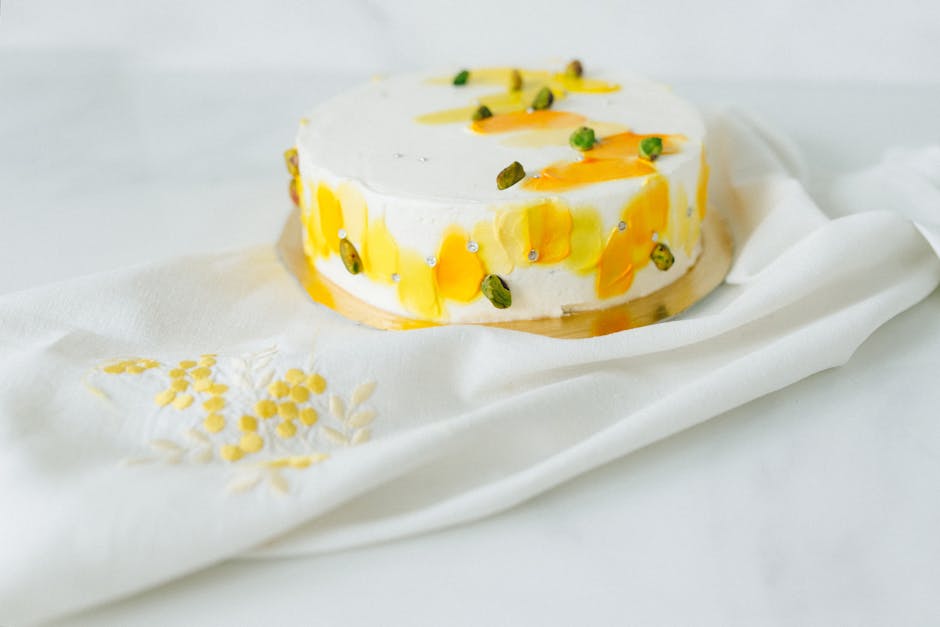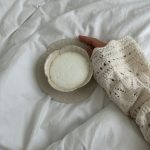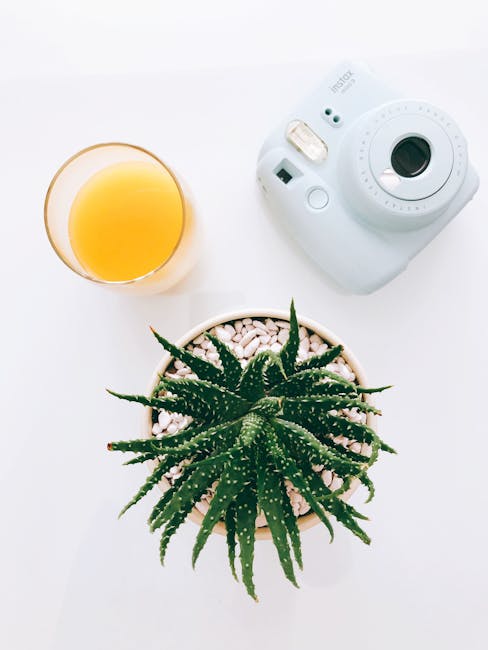The humble electrolyte drink, a seemingly modern concoction readily available in brightly colored sports bottles, boasts a surprisingly ancient history. While the commercially produced versions are relatively recent, the concept of replenishing lost electrolytes dates back centuries, intrinsically linked to human understanding of hydration and physical exertion. Early civilizations, from ancient Greece and Rome to various indigenous cultures across the globe, intuitively understood the importance of maintaining electrolyte balance. Their methods, however, were far less refined than the precise formulations we see today. Think of the sweaty gladiators of Rome, perhaps consuming broth or salted water after intense combat—an early, albeit rudimentary, attempt at electrolyte replenishment. The exact origins are difficult to pinpoint, as the knowledge was likely passed down through generations, embedded within cultural practices and dietary habits rather than formalized scientific study.
The scientific understanding of electrolytes and their crucial role in bodily functions emerged much later. The discovery and isolation of individual electrolytes like sodium, potassium, chloride, and magnesium throughout the 18th and 19th centuries laid the groundwork for a more precise comprehension of their physiological importance. This gradually led to the development of electrolyte solutions used in medicine, primarily for treating dehydration and electrolyte imbalances resulting from illness or injury. By the mid-20th century, the connection between electrolyte loss during strenuous activity and athletic performance became clearer. This realization spurred the development of commercial sports drinks, designed to quickly replenish fluids and electrolytes lost through sweat. The market for these drinks exploded, particularly in the latter half of the 20th century, largely fueled by increased participation in sports and fitness activities.
The cultural significance of electrolyte drinks is undeniable, particularly in societies with a strong focus on athletic achievement and physical fitness. They’ve become a ubiquitous symbol of athleticism and healthy living, interwoven into the fabric of sporting events, gym culture, and even everyday routines. Statistics show that the global sports drink market is a multi-billion dollar industry, highlighting the widespread consumption and cultural acceptance of these beverages. However, it’s crucial to note that while commercially produced sports drinks offer convenience, they often contain high levels of sugar and artificial ingredients. This has led to a resurgence in interest in homemade electrolyte drinks, allowing individuals to control the ingredients and create healthier alternatives tailored to their specific needs. This return to homemade solutions reflects a growing consumer awareness of the importance of both nutrition and minimizing processed ingredients, aligning with broader cultural trends towards healthier lifestyles and greater transparency in food production.
Ingredients and Measurements
Creating a homemade electrolyte drink requires careful attention to the balance of ingredients. The quantities provided below are for a single serving (approximately 8 ounces/240ml), but can easily be scaled up for larger batches. Always adjust quantities based on your individual needs and activity level. Consult with a healthcare professional before making significant changes to your electrolyte intake, especially if you have underlying health conditions.
Water: 8 ounces (240ml). Using filtered or purified water is recommended to avoid potential contaminants that could interfere with the electrolyte balance or affect the taste. Tap water is acceptable, but its mineral content might alter the final taste and electrolyte profile. Ensure the water is at room temperature or slightly cool for optimal absorption. Very cold water can slow down the absorption of electrolytes.
Salt (Sodium Chloride): 1/4 teaspoon (1.5 grams). Sodium is crucial for maintaining fluid balance and muscle function. Do not exceed this amount without consulting a doctor, as excessive sodium intake can be detrimental to health. Using fine sea salt or table salt is fine; iodized salt is also acceptable. Avoid using excessive amounts of salt as it contributes to hypertension.
Potassium Chloride: 1/8 teaspoon (approximately 0.5 grams). Potassium is another essential electrolyte vital for muscle contractions and nerve impulses. Potassium chloride is a powder and should be measured carefully using a precise measuring spoon. It is available at most pharmacies and health food stores. Do not substitute potassium chloride with potassium supplements in other forms without consulting your doctor.
Sugar (Optional): 1-2 teaspoons (4-8 grams). While not strictly an electrolyte, sugar (glucose or sucrose) can help improve the palatability of the drink and provide a quick source of energy. Use sparingly, as excessive sugar can lead to weight gain and other health problems. You can substitute with other sweeteners like honey or maple syrup, but adjust the amount to your taste preference. Consider using natural sweeteners for a healthier option.
Lemon or Lime Juice (Optional): 1-2 tablespoons (15-30ml). Adding a squeeze of citrus juice enhances the flavor and provides a small amount of additional electrolytes and Vitamin C. This also helps to improve the taste and make the drink more refreshing. Freshly squeezed juice is preferable to bottled juice, as it contains more nutrients and less added sugar.
Other Additives (Optional): You can add other ingredients to personalize your electrolyte drink. For example, a pinch of baking soda (sodium bicarbonate) can help to buffer acidity, but use it cautiously and sparingly as it can alter the pH balance. Small quantities of fruit juice (like orange or cranberry) can add flavor and additional nutrients, but be mindful of added sugars.
Important Note: The quantities provided are guidelines. Individual electrolyte needs vary greatly based on factors like activity level, climate, and sweat rate. Listen to your body and adjust the recipe accordingly. If you experience any adverse effects, discontinue use and consult a healthcare professional.
Preparation Phase (includes sanitation of equipment)
Before embarking on the creation of your homemade electrolyte drink, meticulous preparation is paramount. This phase focuses on ensuring both the safety and quality of your final product. Neglecting this crucial step can lead to contamination and compromise the effectiveness and even the safety of your drink.
The first and most important step involves the sanitation of all equipment that will come into contact with the ingredients or the finished electrolyte drink. This includes, but is not limited to, your mixing bowls, measuring cups and spoons, stirring utensils (spoons, whisks), and any bottles or containers you’ll use for storage. Thorough sanitation prevents the introduction of unwanted bacteria or microorganisms that can spoil your drink or cause illness.
Wash all equipment thoroughly with hot, soapy water. Use a good quality dish soap and scrub all surfaces meticulously, paying close attention to any crevices or hard-to-reach areas. A bottle brush is particularly useful for cleaning bottles and narrow-necked containers. Rinse thoroughly with hot, clean water to remove all traces of soap. Residual soap can affect the taste of your electrolyte drink.
For a higher level of sanitation, consider using a sanitizing solution. A simple and effective method is to use a diluted bleach solution. Mix 1 teaspoon of unscented household bleach with 1 gallon (4 liters) of cold water. Submerge your clean equipment in this solution for at least 1 minute, ensuring all surfaces are fully immersed. Then, rinse thoroughly with clean, cold water. Do not use hot water after sanitizing with bleach, as this can activate the bleach and potentially leave a chemical residue. Allow the equipment to air dry completely on a clean, sanitized surface before proceeding.
Alternatively, you can use a commercial food-grade sanitizer, following the manufacturer’s instructions carefully. These are often available at restaurant supply stores or online. Always follow the specific instructions provided on the sanitizer packaging, paying close attention to contact time and dilution ratios. Improper use can be ineffective or even harmful.
Preparation of your workspace is equally crucial. Clean your work surface with a sanitizing solution or hot, soapy water. Ensure the area is free from debris and potential sources of contamination. This will minimize the risk of introducing unwanted elements into your electrolyte drink during the mixing process. Having a clean and organized workspace will also contribute to a more efficient and enjoyable preparation experience.
Once your equipment and workspace are thoroughly sanitized and dry, you can proceed to the next step in making your homemade electrolyte drink, confident that your final product will be both safe and delicious.
Mixing Instructions
Creating your homemade electrolyte drink is a straightforward process, but precision is key to achieving the optimal balance of electrolytes and taste. Follow these instructions carefully for the best results. This recipe yields approximately 1 liter (approximately 4 cups) of electrolyte drink. Adjust quantities proportionally if you need a larger or smaller batch.
Step 1: Prepare the Water. Begin by using 1 liter (approximately 4 cups) of cool, filtered water. Avoid using hot water, as this can degrade some of the vitamins and minerals in your ingredients. The water temperature will also affect the solubility of the salts, potentially leading to a grainy texture if the water is too cold. Room temperature or slightly cool water is ideal.
Step 2: Dissolve the Salts. Accurately measure the following ingredients: 4 grams of salt (sodium chloride), 2 grams of potassium chloride (available at most pharmacies or health food stores), and 1.5 grams of magnesium chloride. Use a kitchen scale for precise measurements; eyeballing can lead to an unbalanced electrolyte solution. Gently add the salts to the water, one at a time, stirring continuously with a spoon or whisk. This helps to prevent clumping and ensures even distribution.
Step 3: Incorporate the Sugar and/or Sweetener (Optional). Add 40 grams (approximately 1/4 cup) of sugar, honey, or your preferred sweetener to the water-salt mixture. Adjust this amount to your taste preference. If using honey or maple syrup, ensure it’s fully dissolved by stirring vigorously. The sugar or sweetener provides readily available energy and improves the palatability of the drink. Alternatively, you can use a sugar substitute, but be mindful of the potential for differences in taste and sweetness compared to sugar.
Step 4: Add the Juice. To enhance flavour and add additional nutrients, incorporate 200ml (approximately 1 cup) of your favorite juice. Citrus juices like lemon, lime, or orange work particularly well, offering additional electrolytes and a refreshing taste. If you prefer a less sweet drink, you can reduce the amount of juice or use a lower-sugar variety. You can also experiment with other fruit juices, but be aware that the added sugars and acidity may impact the overall balance of the electrolyte drink.
Step 5: Stir Thoroughly and Check Consistency. Once all the ingredients are added, stir the mixture vigorously to ensure everything is fully dissolved and evenly distributed. Check for any undissolved granules; if any remain, continue stirring or consider using a blender for a smoother consistency. If it’s too thick, you can add a little more water. If it’s too thin, you can add a little more sugar or salt (but proceed cautiously, making small adjustments at a time).
Step 6: Refrigerate and Serve. Transfer the electrolyte drink to a sealed container and refrigerate for at least 30 minutes before serving. This allows the flavors to meld and the drink to chill. Consume within 24 hours for optimal freshness. Remember to always consult with your doctor or a registered dietitian before making significant changes to your diet, especially if you have any underlying health conditions.
Important Note: This recipe serves as a guideline. Adjust the quantities of each ingredient to suit your individual needs and preferences. However, do not significantly deviate from the recommended electrolyte ratios without consulting a healthcare professional, as an imbalance of electrolytes can have negative health consequences.
Storage Instructions
Proper storage of your homemade electrolyte drink is crucial to maintaining its quality, safety, and effectiveness. Improper storage can lead to bacterial growth, a loss of potency, and an unpleasant taste or smell. To ensure you’re enjoying a refreshing and beneficial beverage, follow these guidelines carefully.
Refrigeration is Key: Once prepared, your homemade electrolyte drink should always be refrigerated. This significantly slows down the growth of microorganisms that could contaminate your drink and cause spoilage. Keep the drink in an airtight container to prevent absorption of odors from other foods in your refrigerator. A glass container or a food-grade plastic container with a tight-fitting lid is ideal.
Storage Timeframe: While the exact lifespan depends on the specific ingredients used, a homemade electrolyte drink is generally best consumed within 24-48 hours of preparation. After this timeframe, the risk of bacterial growth increases significantly, and the drink may begin to lose its nutritional value and develop an off-flavor. Even if it still looks and smells acceptable, it’s best to err on the side of caution and discard it after 48 hours.
Container Size Matters: Consider the quantity you plan to consume within the recommended 48-hour window when preparing your drink. Making smaller batches (e.g., 1-2 liters) ensures that you’ll consume the entire batch within the safe timeframe, minimizing waste and reducing the risk of spoilage. Avoid making excessively large batches, as this increases the likelihood of spoilage before it can be consumed.
Freezing for Extended Storage (Not Recommended): While you can technically freeze your homemade electrolyte drink, it’s generally not recommended. The freezing and thawing process can alter the texture and potentially reduce the effectiveness of the electrolytes. The drink might become watery or develop ice crystals, affecting its taste and consistency. Furthermore, repeated freezing and thawing cycles further increase the risk of bacterial contamination.
Signs of Spoilage: Always inspect your electrolyte drink before consuming it. Discard it immediately if you notice any of the following signs: off-odors, unusual cloudiness or sediment, mold growth, or a significant change in taste or color. Even a slight change in smell or taste can indicate spoilage, and consuming a spoiled beverage could lead to illness.
Proper Cleaning of Containers: Before storing your electrolyte drink, ensure your chosen container is thoroughly cleaned and sanitized. Wash it with warm, soapy water, rinse it well, and consider using a food-safe sanitizer to eliminate any potential bacteria. This practice will help maintain the hygiene and extend the shelf life of your homemade electrolyte drink.
In summary: Refrigerate your homemade electrolyte drink immediately after preparation, consume it within 24-48 hours, and discard any drink showing signs of spoilage. Proper storage practices are essential to ensure both the safety and effectiveness of your homemade beverage.
Serving Suggestions (including temperature)
Your homemade electrolyte drink is best enjoyed chilled, but its versatility allows for adaptation to your personal preference. The ideal serving temperature is between 35-45°F (2-7°C). This temperature range enhances the refreshing qualities of the drink, making it especially appealing after strenuous activity or on a hot day. For optimal chilling, prepare your electrolyte drink in advance and refrigerate it for at least 2 hours before serving. Avoid freezing the drink, as this can affect the taste and potentially cause the separation of ingredients.
Serving Size: A standard serving size is approximately 8 fluid ounces (240ml). This amount provides a balanced replenishment of electrolytes without being overly sweet or overwhelming in volume. However, you can adjust the serving size based on your individual needs and activity level. For instance, after an intense workout lasting over an hour, you might choose to consume a larger serving, perhaps 12-16 fluid ounces (360-480ml), within a short time frame. Remember to listen to your body and adjust accordingly.
Enhancements and Variations: While delicious on its own, your homemade electrolyte drink can be enhanced with various additions. A squeeze of fresh lime or lemon juice can add a zesty zing and boost the vitamin C content. A few fresh mint leaves muddled gently before adding the liquid can create a refreshing and aromatic twist. For a fruitier option, consider adding a few slices of your favourite fruit, such as cucumber, berries, or oranges, directly to the drink before chilling. Allow the fruit to infuse for at least 30 minutes, or longer for a more intense flavour, to release its natural sweetness and nutrients. Remember to remove the fruit pieces before serving if you prefer a smoother texture.
Serving with Food: Your electrolyte drink can complement various foods. It pairs well with light meals, salads, and snacks. Its refreshing nature makes it an ideal accompaniment to a post-workout meal or a healthy lunch. Avoid serving it with very hot foods, as the temperature contrast might be unpleasant. Consider serving it alongside a light salad or a sandwich for a balanced and refreshing meal.
Storage and Shelf Life: Store your prepared electrolyte drink in an airtight container in the refrigerator for up to 3 days. After this timeframe, the drink’s flavor and nutritional value may begin to deteriorate. Do not consume any drink that shows signs of spoilage, such as discoloration, unusual odor, or mold growth. For longer storage, consider preparing smaller batches to ensure freshness.
Important Note: While this homemade electrolyte drink is a healthy and refreshing option, it should not be considered a substitute for medical advice. If you have specific dietary concerns or health conditions, consult a healthcare professional or registered dietitian before making significant changes to your diet or fluid intake. Always listen to your body and adjust your fluid consumption based on your individual needs and activity level.
Tips and Tricks for Taste and Consistency
Crafting the perfect homemade electrolyte drink involves more than just mixing salts and water. Achieving a delicious and consistent taste requires attention to detail and a bit of experimentation. This section offers tips and tricks to elevate your electrolyte beverage from functional to fantastic.
Start with high-quality ingredients. The foundation of any great drink is its ingredients. Use purified or filtered water to avoid any off-flavors from tap water. Opt for high-quality salts like sea salt (for sodium) and potassium chloride (for potassium). Avoid using iodized salt, as the iodine can impart a metallic taste. For added flavor, choose fresh, ripe fruits whenever possible. The quality of your ingredients directly impacts the final taste.
Master the salt balance. The ratio of electrolytes is crucial. A good starting point is approximately 460mg of sodium and 250mg of potassium per liter of water. However, individual needs vary based on activity level and sweat rate. Adjust these amounts according to your personal preference and needs, always staying within safe ranges recommended by healthcare professionals. Too much salt can be unpleasant, while too little may not provide sufficient electrolyte replenishment.
Sweeten strategically. While electrolytes are the main focus, sweetness enhances palatability. Use natural sweeteners like honey, maple syrup, or fruit juice sparingly. Start with 1-2 tablespoons of your chosen sweetener per liter of water and adjust based on your taste. Remember that excessive sugar can negate some of the benefits of an electrolyte drink. Consider using stevia or another low-calorie sweetener if you’re watching your sugar intake.
Fruit infusion: the flavor enhancer. Fresh fruit adds natural sweetness and vibrant flavors. Experiment with different combinations! Berries, citrus fruits, and melons work particularly well. For optimal flavor, muddle the fruit slightly before adding it to the water. Let the mixture sit in the refrigerator for at least 30 minutes to allow the flavors to infuse properly. You can also use frozen fruit for a naturally chilled and refreshing drink.
Blend for smoothness. If you’re using whole fruits, blending the mixture can create a smoother consistency, especially if you prefer a pulp-free drink. Simply blend all ingredients together before straining to remove any seeds or pulp. This step is optional but enhances the drinking experience for many.
Adjust for consistency. The consistency of your electrolyte drink should be refreshing and easily drinkable. If it’s too thick, add more water. If it’s too thin, add more fruit or a thickening agent such as chia seeds (which also add nutritional benefits). Always taste and adjust until you achieve your desired flavor and texture.
Store properly. Homemade electrolyte drinks are best consumed fresh. If storing leftovers, keep them in an airtight container in the refrigerator for no more than 24 hours. The longer it sits, the more likely it is to lose its potency and develop undesirable flavors.
Consult a professional. For specific electrolyte needs, especially after intense physical activity or during illness, consult a doctor or registered dietitian. They can help determine the appropriate electrolyte balance for your individual circumstances.
Homemade Electrolyte Drink: Recommendations
This homemade electrolyte drink provides a refreshing and healthy way to replenish essential minerals lost through sweat, especially after exercise or during periods of illness. It’s crucial to remember that this recipe is a supplement and should not replace medical advice. Consult your doctor if you have concerns about electrolyte imbalances.
Serving Suggestions: This electrolyte drink is best enjoyed chilled. It’s perfect as a post-workout recovery beverage, a refreshing midday pick-me-up, or a hydrating companion during hot weather. Consider adding fresh fruit slices like lemon, lime, or berries for extra flavor and vitamin C. You can also experiment with herbs like mint or basil for a unique twist. For a sweeter version, a small amount of honey or maple syrup can be added, but remember to adjust the overall calorie count accordingly.
Storage Conditions: For optimal freshness and to prevent bacterial growth, store your homemade electrolyte drink in an airtight container in the refrigerator. It’s recommended to consume it within 24-48 hours of preparation. Do not freeze the drink as this can alter the taste and potentially affect the stability of the electrolytes.
Complementary Dishes: This electrolyte drink pairs wonderfully with light and healthy meals. It complements salads, particularly those with leafy greens and lean protein. It also goes well with grilled chicken or fish, providing a refreshing counterpoint to savory dishes. Avoid pairing it with overly sugary or salty meals, as this might disrupt the electrolyte balance.
Nutritional Information (per 8-ounce serving, approximate values may vary based on specific ingredients and quantities used):
- Calories: Approximately 50-100 calories (depending on added sweeteners)
- Sodium: Varies depending on the salt used (e.g., sea salt, Himalayan pink salt). Aim for approximately 200-400mg for a balanced electrolyte drink.
- Potassium: Primarily sourced from the added potassium source (e.g., potassium chloride, banana). Aim for approximately 200-400mg.
- Carbohydrates: Primarily from added sugars (if any) or natural sugars in fruits. This will vary depending on the recipe.
- Sugar: Will vary greatly depending on the addition of sweeteners. Aim for minimal added sugar.
Important Note: The nutritional information provided is an estimate. The exact values will depend on the specific ingredients and their quantities used in your homemade recipe. Always check the nutritional labels of your ingredients for accurate information.
Disclaimer: This information is for general knowledge and does not constitute medical advice. Always consult with a healthcare professional before making significant dietary changes, especially if you have underlying health conditions.





